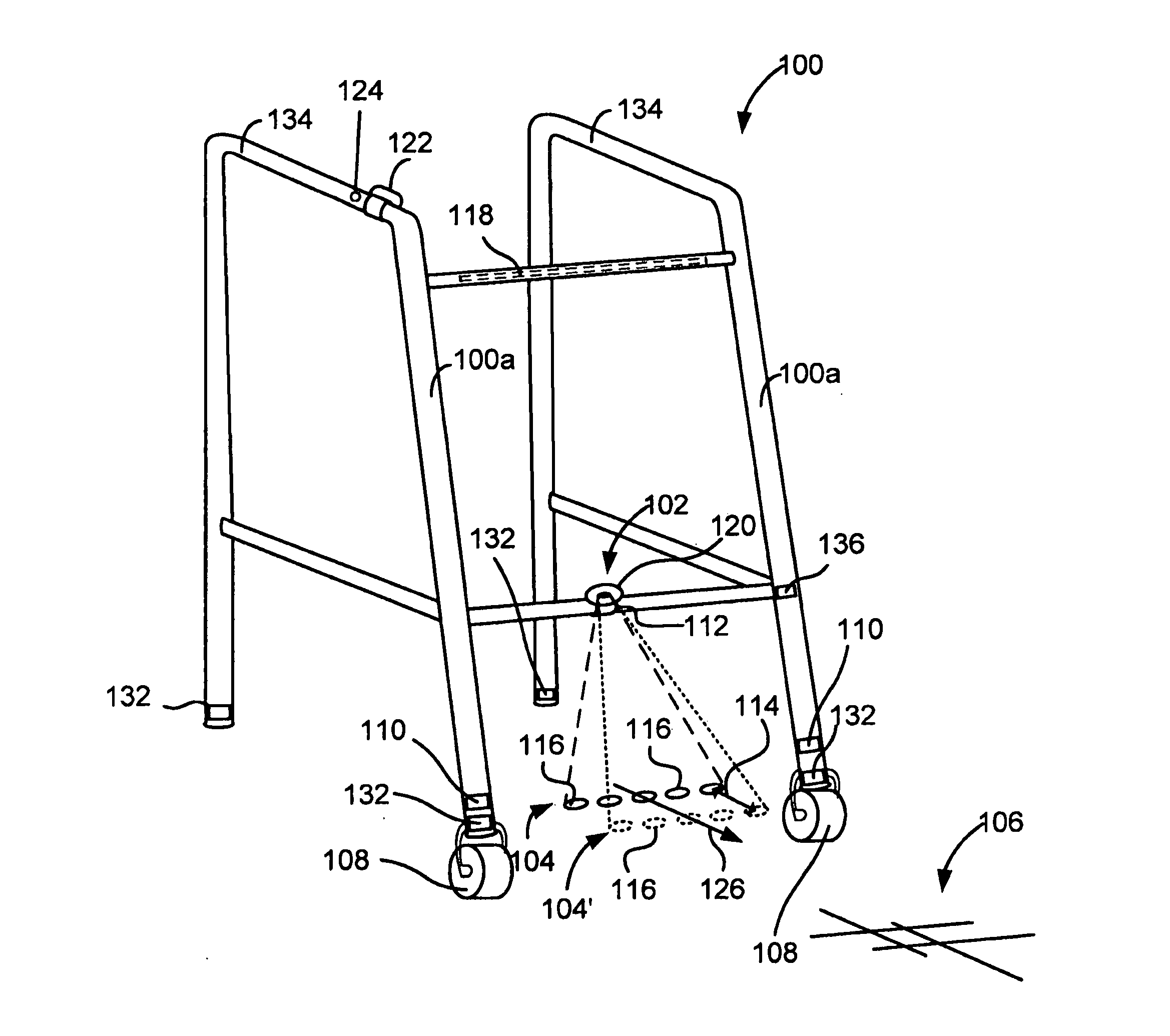System and method for alleviating freezing gait and gait hypokinesia in users with extrapyramidal disorder
a technology for extrapyramidal disorder and users, applied in walking aids, physical therapy, clubs, etc., can solve the problems of fog not being responsive to available medications, fog posing a significant risk of injury to individuals, and affecting the normal functioning of users, so as to achieve the effect of reducing fog and reducing the risk of injury for users
- Summary
- Abstract
- Description
- Claims
- Application Information
AI Technical Summary
Benefits of technology
Problems solved by technology
Method used
Image
Examples
Embodiment Construction
[0023]The present disclosure is directed to a device and method that may be used to alleviate “Freezing of Gait” (FOG) in a user suffering from parkinsonism or a similar neurological disorder. The device may also be used as a gait rehabilitation therapy to encourage a user suffering from gait hypokinesia that has decreased stride length to lengthen their stride. It has been known that some users of walkers may make sudden movements or leave their walker behind when rushing to make a turn. Therefore, the device may also be used to facilitate proper walker, or other walking aid, usage by encouraging the user to keep the walker properly situated in front of them in their direction of motion. Proper walker usage may also be improved with appropriate posture, which the present device can help to improve by encouraging a user to place their feet at an appropriate location beneath a walker. The device can also be used for fall prevention in that a user is encouraged to concentrate upon ste...
PUM
 Login to View More
Login to View More Abstract
Description
Claims
Application Information
 Login to View More
Login to View More - R&D
- Intellectual Property
- Life Sciences
- Materials
- Tech Scout
- Unparalleled Data Quality
- Higher Quality Content
- 60% Fewer Hallucinations
Browse by: Latest US Patents, China's latest patents, Technical Efficacy Thesaurus, Application Domain, Technology Topic, Popular Technical Reports.
© 2025 PatSnap. All rights reserved.Legal|Privacy policy|Modern Slavery Act Transparency Statement|Sitemap|About US| Contact US: help@patsnap.com



